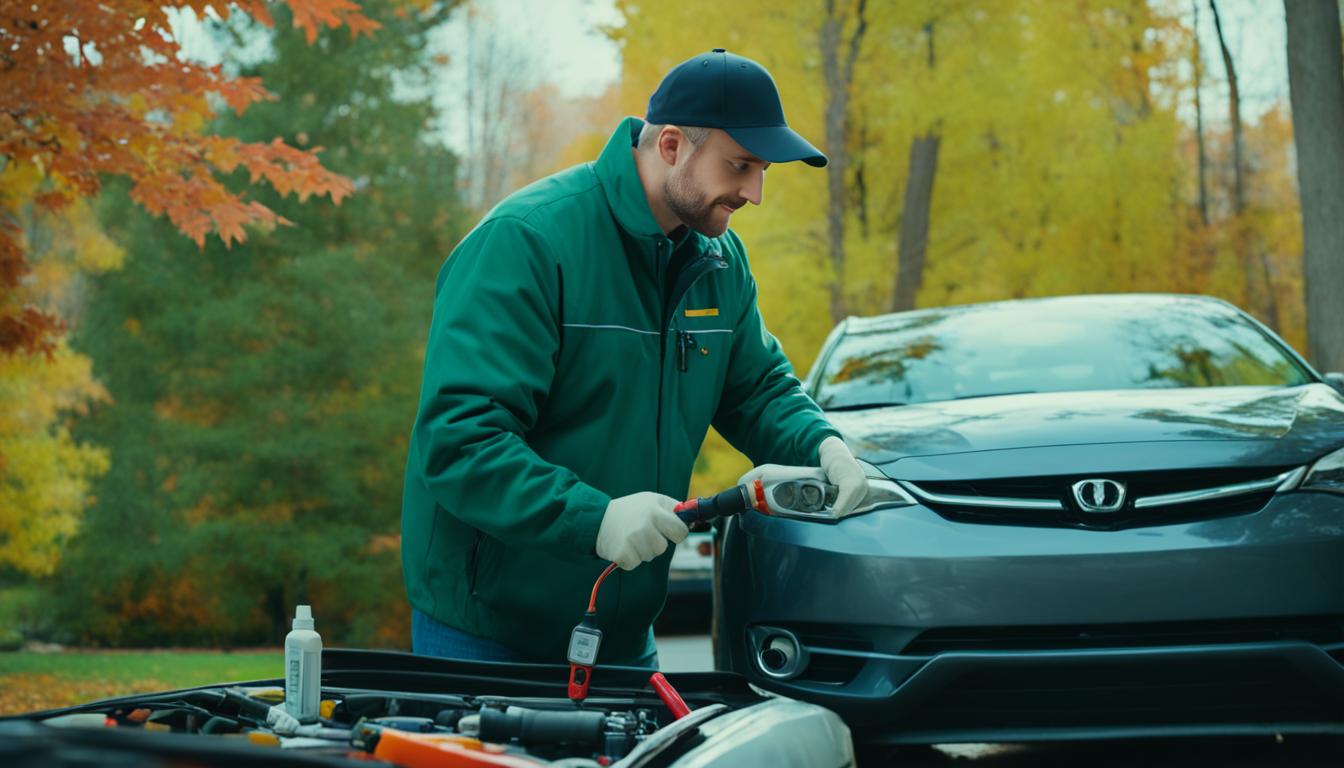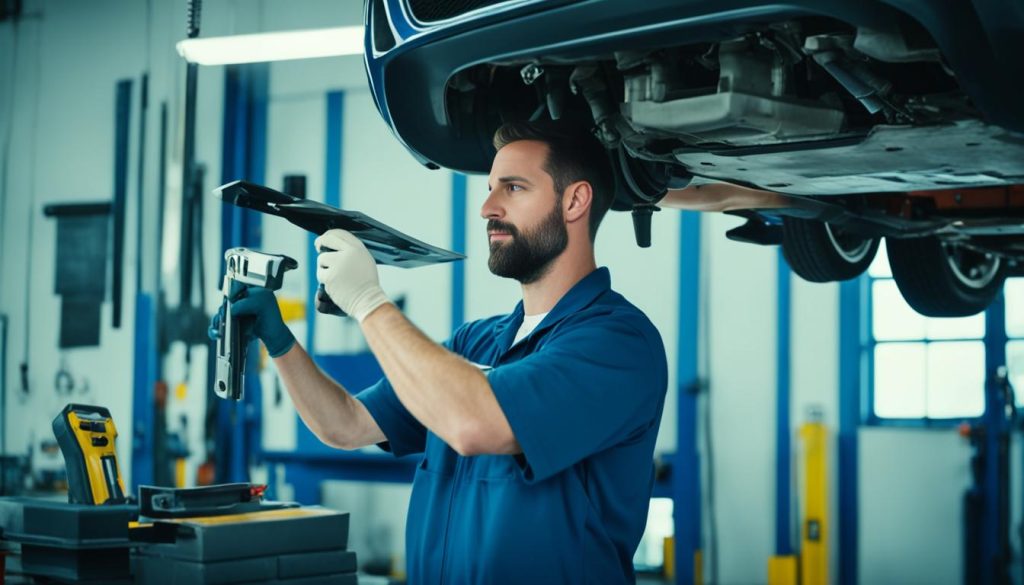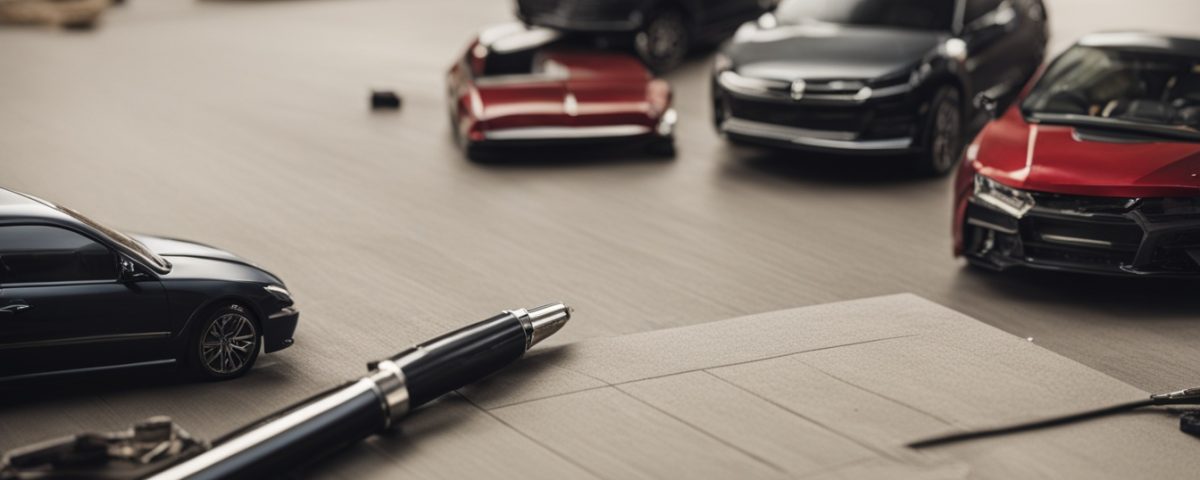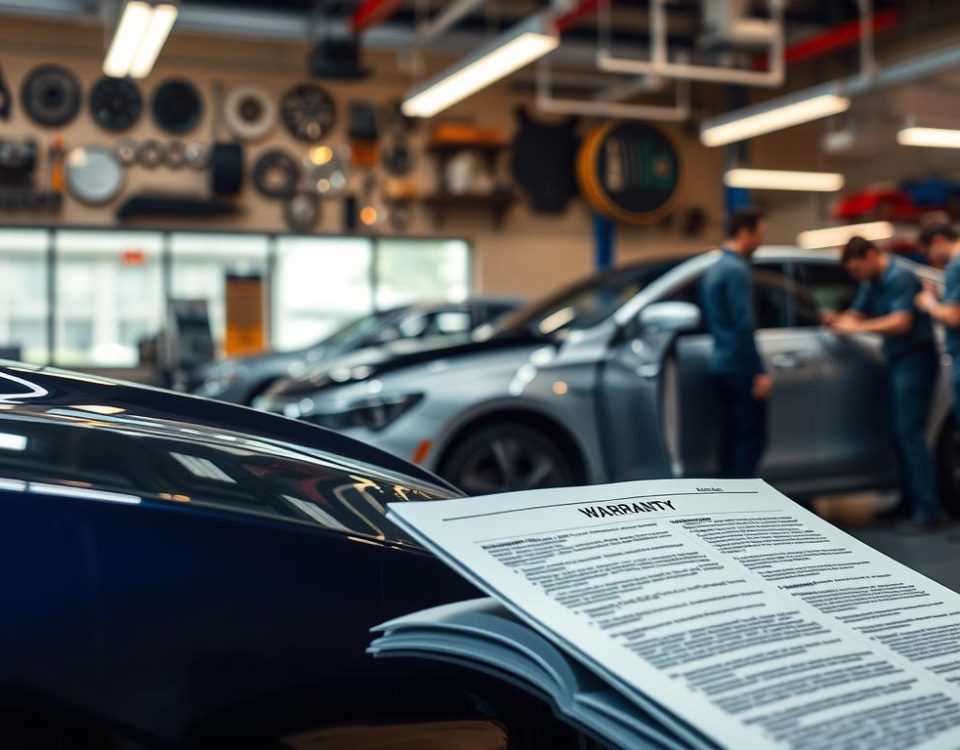
Seasonal Vehicle Maintenance Tips for Collision Prevention

How to Repair Paint Chips and Scratches on Your Car
Leasing a vehicle means you need to be familiar with how collision repairs work. We, at [Company Name], know how vital it is to guard your investment. This ensures a hassle-free repair process for your leased car. In this article, we’ll guide you on handling collision repairs for your leased car confidently.
Key Takeaways:
- Leasing a vehicle requires an understanding of the collision repair process.
- Notify your insurance company and leasing company in the event of an accident.
- Know your options for pursuing an insurance claim based on fault.
- Coordinate repairs with the leasing company according to their guidelines.
- Avoid potential penalties and double charges by following repair rules.
Reporting an Accident for Leased Vehicles
If you have an accident while driving a leased car, you must tell the right people quickly. Start by reporting the accident to your insurance company. This step is essential to begin the claims process. You give the insurance company the details they need to figure out who’s at fault and what needs to be fixed.
Also, make sure to tell the dealership or leasing company about the accident. They need to know what happened. This way, they can help get the car fixed. Always check your lease to see when and how you should report accidents.
Sometimes, the law says you have to tell the motor vehicles department about the accident, too. This is for legal records and to keep track of accidents.
Working fast to report and tell everyone who needs to know is key. It kicks off the process to fix the car or get a new one. This helps get things sorted out quickly and with less trouble for you.
Notifying your Insurance Company
When you tell your insurance about the accident, be honest and share all the facts. They’ll want to know where and when the accident happened, what got damaged, and if the police came. The insurance team will then help move your claim forward and may ask you to get repair quotes or inspections.
Notifying the Leasing Company
Letting the leasing company know about the accident is crucial. They can tell you what to do next and where to fix the car. This is important to avoid issues when you’re ready to return the car.
The leasing company cares a lot about the car’s condition. Your lease might have rules on how to fix the car. Stick to those rules to keep the car’s value and your lease in good shape.
Getting Your Leased Vehicle Repaired
After a car accident with your leased car, you should fix the car based on who’s at fault. Getting your car back on the road quickly is important. We’ll talk about ways to do this.
1. Pursuing an Insurance Claim
If the other driver caused the crash, you can get their insurance to pay for repairs. Just call their insurance and give them the info they need. Their insurance should pay for your leased car’s repairs.
But, if you caused the crash or don’t want to wait, use your insurance instead. This is called a first-party or collision claim. It lets you start fixing your car without waiting to find out who’s at fault. However, this might make your future insurance payments higher or affect your deductible.
2. Coordinating with the Leasing Company
It’s key to coordinate repairs with your leasing company, no matter who’s at fault. They might have specific rules in your leasing agreement. These could include using certain parts or a particular repair shop.
Make sure to check your agreement and talk to your leasing company. This helps avoid issues later on due to not following their repair rules.
3. Urgency of Repairs
If the car’s not safe or can’t be driven, fix it quickly. Most leasing companies prefer to see the car fixed fast. But if the damage is small and the car is still safe to drive, you may have some time to schedule the repairs.

Always talk to your insurance, your leasing company, and others involved. They can help make fixing your leased car a smooth process.
Coordinating Repairs with the Leasing Company
When you need to repair your leased car, you must follow the leasing company’s guidelines. They set these rules to ensure the car stays in good shape, which is part of your lease agreement.
Most companies want you to use parts from the original maker in any repairs. This is to keep the car’s quality high and its value up. Always use these parts if your car needs fixing.
Some leasing companies say you can only get your car fixed at certain dealerships or repair shops. They do this to make sure the work is top-notch and done by experts in leased cars.
If you don’t stick to their rules about repairs, you could end up paying more later. When your lease is up, they might check if the repairs were done right. If not, you could face extra charges.
To steer clear of troubles and extra costs, always check your lease and know the rules on repairs. If you’re unsure about anything, ask the leasing company for help and advice.
The Importance of Compliance
Following the leasing company’s repair rules is vital. It not only keeps you on good terms with them but also helps maintain your car’s value. This way, the car is repaired correctly, and you avoid future problems.
Sticking to the repair guidelines stops arguments with the leasing company. It shows you’re committed to their standards, helping you build a good relationship with them over your lease term.
Remember, handling repairs correctly is key to keeping your leased car in its best shape. Always obey the company’s repair rules to make the process go well and dodge any disagreements or extra costs.
Potential Penalties and Double Charges
When you return a leased car, it goes through a check-up. This is to see if it’s in good shape. If you repaired damage from an accident, the leasing company might charge you extra if they think the repairs aren’t good enough.
If they are not happy with the repairs, they might want you to fix it again. You will then pay twice. To avoid this, always go to the repair shop the leasing company suggests. Follow their repair guidelines closely to lower your risk of extra charges.
Handing back a leased car when the lease is over can be stressful. You’d want to avoid paying more for repairs or extra fees.
The leasing company checks the car really well. If there was an accident before and you fixed it, they check how good the repair job was. If it doesn’t meet their standards, they could add to your bill.
Not fixing your car as they want could cost you new repair charges. The leasing company might also fine you. This makes double charges. It’s something you’d want to avoid.
Make sure to use the right repair shop and follow their rules. This way, your repairs should be good enough for the leasing company.
The Importance of Following Repair Guidelines
By obeying the leasing company’s repair rules, you show you care for the car. This can lower your chances of facing more payments after you return the car.
Obeying their instructions might mean using certain repair places and the right parts. It ensures the repairs are of high quality. The leasing company will trust that the car is in good shape.
Keep good records of all the fixes with bills and receipts. This paperwork shows what you did and what you paid. It helps prove you took good care of the car.
Consulting with Your Leasing Company
If you’re unsure about how to fix the car or what the rules are, talk to the leasing company. They can tell you exactly what to do. This helps make sure your repairs are what they want.
Be open and ask questions to prevent any problems. Getting things clear can help avoid paying extra or getting fines later.

Recovering Damages in Leased Vehicle Accidents
If you weren’t at fault in a leased vehicle accident, you might get compensated for damages. These can include costs like medical bills, lost work pay, and fixing the car. You may also get money for pain, emotional suffering, and how the accident affected your life.
The type of damages and the insurance company involved depend on the state rules. Talking to a lawyer who knows about these cases is key. They can help you figure out what you can claim.
To support your claim, collecting evidence is very important. Take photos, keep medical records, and save repair bills. This proof shows how much you were affected by the accident.
An experienced lawyer can guide you through seeking compensation. They understand the legal steps and can negotiate with insurance. They work to make sure you’re properly compensated.
Conclusion
To handle
collision repair for leased vehicles, you must follow some steps.
You need to report the incident right, talk to your leasing company, and know the repair rules.
Doing these things will help make sure your leased car gets fixed correctly.
It will also keep you from facing extra costs or other problems.
After an accident, quickly and clearly tell your insurance and leasing companies what happened.
This starts the claim process and helps your car get fixed without delays.
Working with your leasing company on the repairs is key.
You must also stick to any repair rules in your lease to avoid extra costs later.
It’s crucial to know your rights if you didn’t cause the accident in your leased car.
You might get money for medical bills, car repairs, and the pain you went through.
Talking to a car accident lawyer is a good idea. They can guide you on your options for getting compensated.



